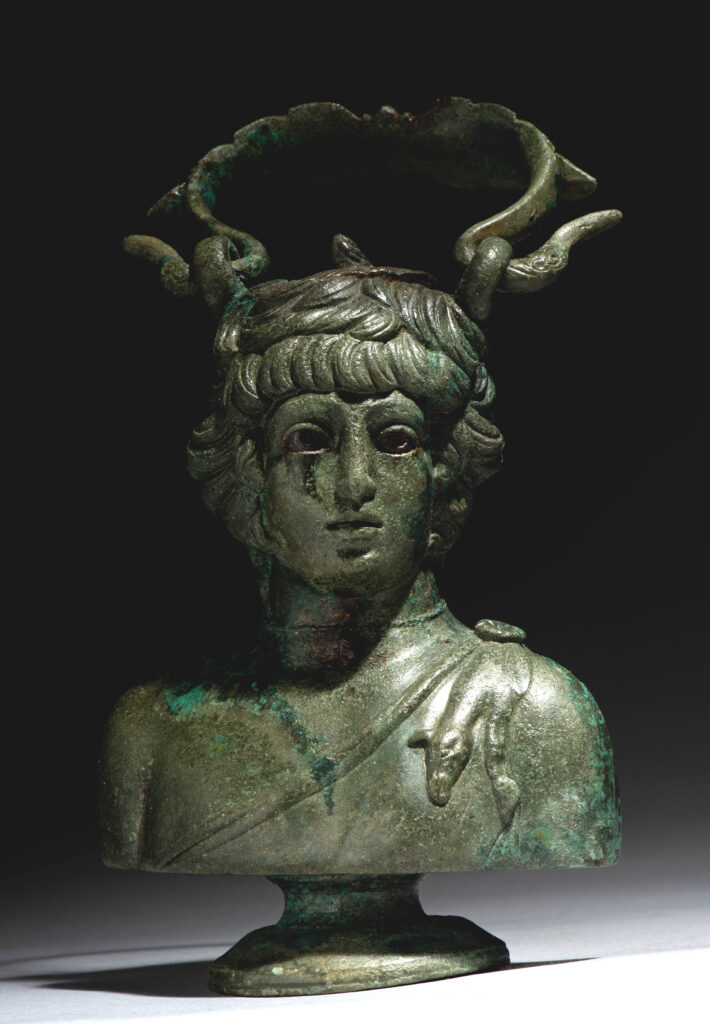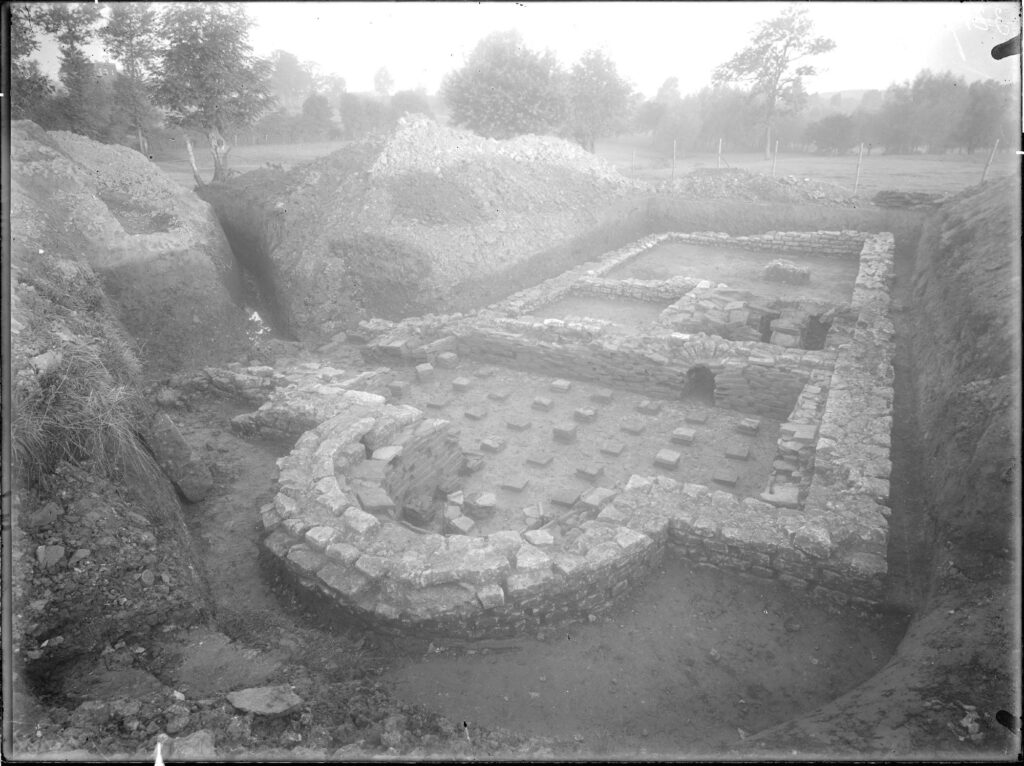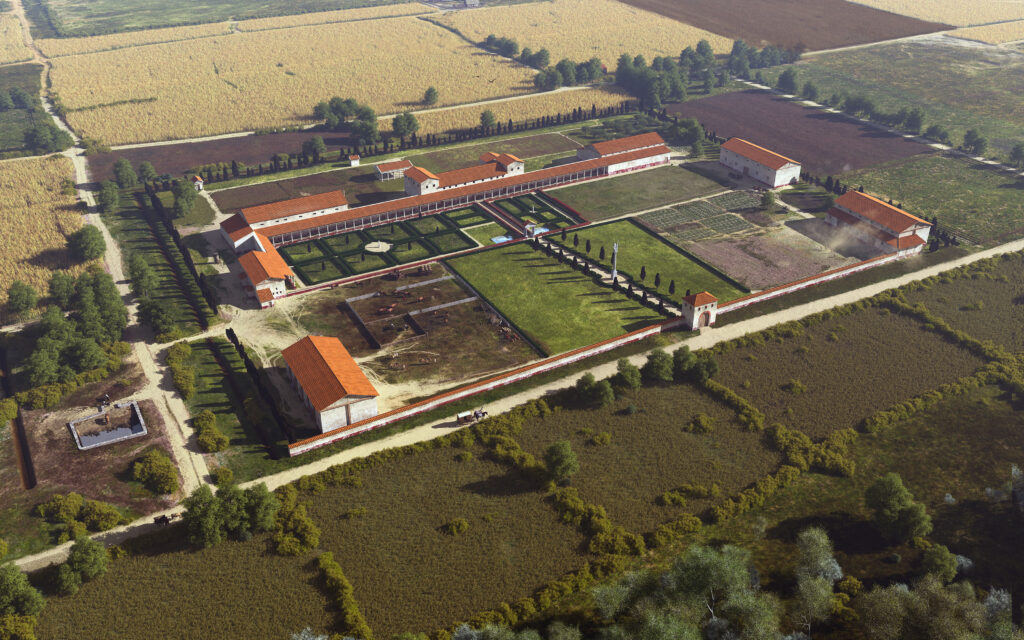A new exhibition at the Dutch National Museum of Antiquities, from April 2024
Around two thousand years ago, there were numerous of Roman villas, as the Romans themselves called them, in the region of Limburg, the Netherlands. These enormous arable farms supplied the whole region with grain. Their owners used the benefits to decorate their farmhouses in Mediterranean country-house style, with bathhouses and Roman inventions such as glass windows and underfloor heating. They were often buried, along with their valuables, on their own land.
Over the past century, archaeologists researched and excavated more than twenty of these country estates. The finds were dispersed across various collections. The ‘Roman villas in Limburg’ exhibition in the Rijksmuseum van Oudheden in Leiden (the Dutch National Museum of Antiquities) brings together the most striking archaeological finds from these villas for the first time. They are displayed in stories about Roman life and agriculture in Limburg, and the significance of the farmlands within the larger Roman network. Particular attention is paid to the residents, from the lady of the house to the people who tilled the land.
The exhibition is a joint project between three Dutch museums: the Rijksmuseum van Oudheden, the Limburgs Museum (Venlo) and the Thermenmuseum (Heerlen). ‘Roman villas in Limburg’ opens in Leiden (25 April-25 August 2024) and then travels to the partner museums. The exhibition is suitable for all ages.

Villa rustica
In addition to the main building -a luxurious country house-, a Roman villa rustica consisted of a large estate with storerooms, houses, stables, workshops, ornamental gardens and extensive arable lands. Archaeological research has shown that dozens of people lived and worked there. Between the first and third centuries AD, the Limburg villas supplied grain to all the residents of the region, in towns such as Heerlen (Coriovallum), Xanten (Colonia Ulpia Traiana) and Cologne (Colonia Claudia Ara Agrippinensium), as well as soldiers along the Limes, the frontier of the Roman empire. Grain was traded with far-flung corners of North-western Europe, via an extensive network of Roman roads and waterways. When Roman power waned at the end of the third century, the villas were destroyed, burned down and abandoned. Hardly any trace of them remains in the landscape of Limburg today.
On display in Leiden
Featuring more than 200 archaeological finds, models, 3D reconstructions and film, ‘Roman villas in Limburg’ transports visitors to rural life two thousand years ago and fields full of waving grain. The finds range from agricultural tools, roof tiles and statues to luxurious mosaics and glassware. The villa residents’ personal possessions, such as a perfume-holder from Bocholtz and a bronze cosmetics box from Maasbree, tell us more about who they were, what they did, and where they were from.
The exhibition includes old favourites such as the amber figurines from Heerlen and the ‘rooster from Buchten’, as well as pieces from museum depots that have never been exhibited before. Highlights include a metres-high reconstructed fresco from Maasbracht depicting gladiators and villa residents, and a glimpse of life at home with the ‘Lady of Simpelveld’. Her villa and its interior are known from images on the sarcophagus in which she was buried. Visitors can take an interactive tour of the ‘Villa of Voerendaal’ and learn how it was enlarged and renovated over three hundred years. They can also see the portrait of the Lady of Voerendaal, who was buried near the villa.

The exhibition features objects from the collections of the Rijksmuseum van Oudheden in Leiden, the Limburgs Museum in Venlo and the Thermenmuseum in Heerlen. There are also loans from various museums and the provincial archaeological depot in Limburg. In addition, there are reconstructions of Roman furniture made specially for the exhibition by students from HMC College in Rotterdam.
‘Roman villas in Limburg’ is one of two exhibitions at the National Museum of Antiquities in the summer of 2024; the exhibition ‘Paestum. City of goddesses’ will be held at the same time.

The exhibition will be accompanied by the booklet ‘Romeinse villa’s in Limburg’ (€12.50, Dutch), an RMO Magazine (€3.95, Dutch), lectures, guided tours, interactive routes for families, and children’s activities in the school holidays and during the National Archaeology Days (16-18 June 2024). There will be interactive tours for schools (from year 5), and on Monday, 27 May 2024, an international congress will be held in Leiden for specialists and enthusiasts.
New research
The research on Roman villas in Limburg began in the 19th century. The Rijksmuseum van Oudheden was actively involved, often in collaboration with local researchers. By 1955 around twenty villas had been excavated, with many finds being brought to Leiden. The others remained in Limburg, including at the Province of Limburg, the Limburg Museum in Venlo and the Thermenmuseum in Heerlen.
For the ‘Roman villas in Limburg’ exhibition, the three museums and the Cultural Heritage Agency of the Netherlands (RCE) joined forces in a major research and public project: ‘A Roman idyll’ (2020-2024). A detailed analysis was made of the thousands of Limburg villa finds and old excavation documents preserved in the archives and depots. Aerial photos and recent excavation data were also used to gather additional information.Amateur archaeologists, museum visitors and heritage enthusiasts in Limburg contributed to several participatory projects. All of the results will be published in the Rijksmuseum van Oudheden’s PALMA scientific series in 2024. The ‘Roman idyll’ project is funded by the Mondriaan Fonds, through the multi-year ‘Museums and heritage institutions’ programme.



